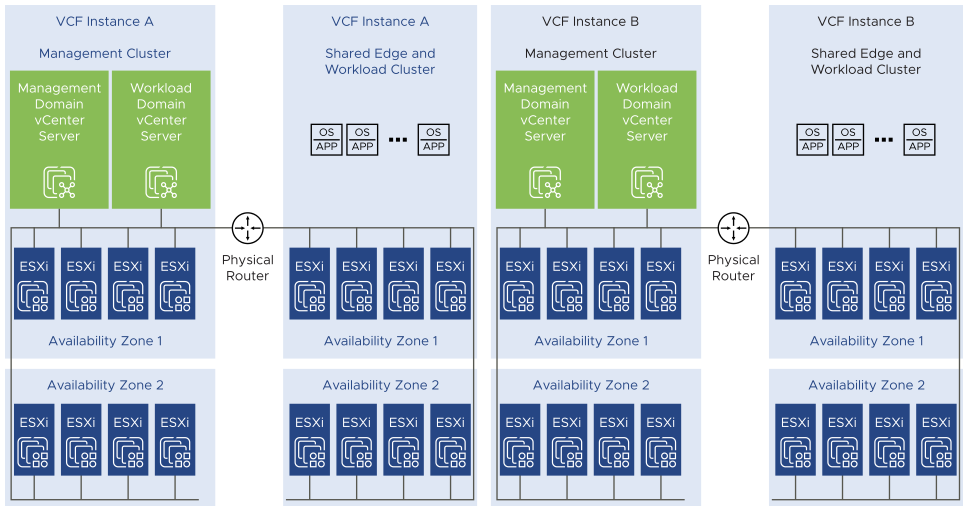The cluster design must consider the characteristics of the workloads deployed in the VI workload domain.
When you design the cluster layout in vSphere, consider the following guidelines:
Use fewer, larger ESXi hosts, or more, smaller ESXi hosts.
A scale-up cluster has fewer, larger ESXi hosts.
A scale-out cluster has more, smaller ESXi hosts.
Compare the capital costs of purchasing fewer, larger ESXi hosts with the costs of purchasing more, smaller ESXi hosts. Costs vary between vendors and models. Evaluate the risk of losing one larger host in a scale-up cluster and the impact on the business with the higher change to lose one or more small hosts in scale-out cluster.
Evaluate the operational costs for managing a few ESXi hosts with the costs of managing more ESXi hosts.
Consider the purpose of the cluster.
Consider the total number of ESXi hosts and cluster limits.


Attribute |
Specification |
|
|---|---|---|
Minimum number of ESXi hosts required for a VI workload domain cluster |
Single availability zone |
4 |
Two availability zones |
8 |
|
Reserved capacity for handling ESXi host failures per cluster |
Single availability zone |
25% CPU and RAM Tolerates one host failure |
Two availability zones |
50% CPU and RAM Tolerates one availability zone failure |
|
Attribute |
Specification |
|
|---|---|---|
Minimum number of ESXi hosts required for a VI workload domain cluster |
Single availability zone |
3 |
Two availability zones |
6 |
|
Reserved capacity for handling ESXi host failures per cluster |
Single availability zone |
33% CPU and RAM Tolerates one host failure. |
Two availability zones |
50% CPU and RAM Tolerates one availability zone failure. |
|
Decision ID |
Design Decision |
Design Justification |
Design Implication |
|---|---|---|---|
VCF-WLD-VCS-CLS-001 |
Create a shared edge and workload vSphere cluster in the VI workload domain. |
You can add ESXi hosts to the cluster as needed. |
Management of multiple clusters and vCenter Server instances increases operational overhead. |
VCF-WLD-VCS-CLS-002 |
If using vSAN as the principal storage, create the shared edge and workload cluster in the VI workload domain with a minimum of 4 ESXi hosts. |
|
To support redundancy, you must allocate additional ESXi host resources. |
Decision ID |
Design Decision |
Design Justification |
Design Implication |
|---|---|---|---|
VCF-WLD-VCS-CLS-003 |
Add 4 ESXi hosts to create the second availability zone of a shared edge and workload cluster in the VI workload domain. The total number of ESXi hosts in the shared edge and workload cluster of the VI workload domain across the two availability zones is eight. |
|
To support redundancy, you must allocate additional ESXi host resources. |
Decision ID |
Design Decision |
Design Justification |
Design Implication |
|---|---|---|---|
VCF-WLD-VCS-CLS-004 |
In each additional VMware Cloud Foundation instance, create the shared edge and workload cluster in the VI workload domain with a minimum of 4 ESXi hosts, when using vSAN as the principal storage. |
|
To support redundancy, you must allocate additional ESXi host resources . |